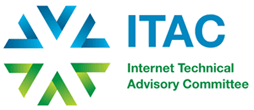 By Constance Bommelaer Senior Director, Global Policy Partnerships, and Nicolas Seidler, Policy Advisor, The Internet Society
By Constance Bommelaer Senior Director, Global Policy Partnerships, and Nicolas Seidler, Policy Advisor, The Internet Society
As the contours of the 2016 OECD Ministerial on the Digital Economy become clearer, many key priority issues require the attention of governments who seek to reap the benefits of the Internet economy.
This 4th edition of the ITAC newsletter aims to provide some insights into issues and factors that enhance our understanding of the open Internet:
As we aim to assess the economic and social benefits of an open Internet, it is useful to take a step back at what we actually mean when we use the term “open Internet.” Lyman Chapin of Interisle Consulting Group provides such a perspective in his article, “The Open Internet: Much More than Just a Good Idea.” It addresses some of the misperceptions of what an open Internet is, and captures the essential properties of openness that make the Internet such a uniquely valuable platform for development.
Foundational to an open Internet are open Internet standards. In an article from Karen McCabe of IEEE Standards Association, “Open ICT and Open Internet for Innovation and Economic Growth,” she explores the relationship between open information communications technologies (ICTs) and an open Internet. Karen points out that economic growth depends increasingly on open ICT and open standards to help ensure interoperability by enabling cross-boundary information sharing and transfer. Read the article here.
The open Internet has enabled the innovations of the Internet of Things (IoT), which offer a wealth of new opportunities that leverage the human-to-device connection as well as present unique challenges. Joni Brennan of Kantara Initiative highlights the challenges of IoT and managing personal data in her article, “IoT and Identity – Managing Personal Data Toward Market Growth in the Age of a Connected Life.”
With the explosion in the number of people, devices, and web services on the Internet, the adoption of IPv6 remains critical to help ensure the Internet can continue its current growth rate indefinitely. Marco Hogewoning and Chris Buckridge from RIPE NCC reinforce this message and the misperception that IPv6 is a product, rather than a building block to a new future in their article, “IPv6: Not a Product, a Building Block.”
In such a distributed network, Christine Runnegar of the Internet Society addresses the importance of a collaborative approach to Internet security in her article “Internet Security: Turning Principles Into Action.” She reminds us that because the Internet is a highly connected environment and effectively a globally shared resource, security risk management must be a shared endeavor and requires broad participation.
Finally, in the context of important changes in the oversight and accountability framework of technical functions within the Domain Name System known as the IANA functions, ICANN reminds us that maintaining the “openness of the Internet” remains a central criteria as the U.S. NTIA’s oversight of these functions is transferred to the multistakeholder Internet community.
An affordable and reliable Internet is not yet a reality for the majority of people in the world. And for those who do have access, being connected does not guarantee they will be able to innovate or freely share information and ideas; these abilities require an enabling Internet environment based on openness.
The Internet Society’s 2014 Global Internet Report , highlights the benefits and challenges of an open and sustainable Internet, and reminds us that significant development work remains to be done to bring the economic and social benefits of the Internet to everyone.
